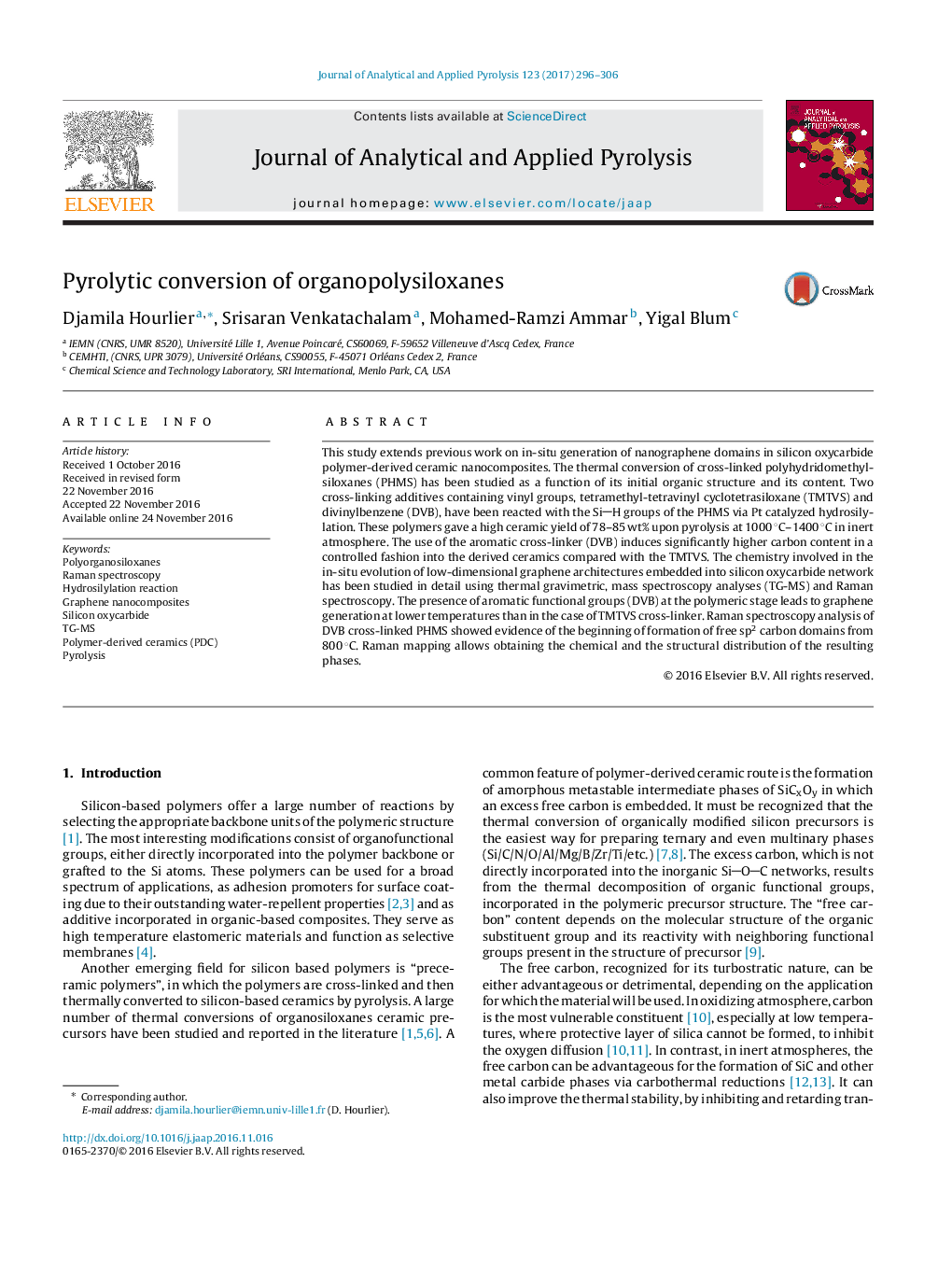| کد مقاله | کد نشریه | سال انتشار | مقاله انگلیسی | نسخه تمام متن |
|---|---|---|---|---|
| 5134549 | 1492954 | 2017 | 11 صفحه PDF | دانلود رایگان |

- TG/MS analysis provides an excellent analytical support for valuable information.
- The chronology of events of the thermal degradation of organopolysiloxanes has been established.
- Divinylbenzene enables one to achieve desirable characteristics and controllable carbon contents.
- Raman mapping provides information on densities of defects in turbostratic carbon.
This study extends previous work on in-situ generation of nanographene domains in silicon oxycarbide polymer-derived ceramic nanocomposites. The thermal conversion of cross-linked polyhydridomethylsiloxanes (PHMS) has been studied as a function of its initial organic structure and its content. Two cross-linking additives containing vinyl groups, tetramethyl-tetravinyl cyclotetrasiloxane (TMTVS) and divinylbenzene (DVB), have been reacted with the SiH groups of the PHMS via Pt catalyzed hydrosilylation. These polymers gave a high ceramic yield of 78-85 wt% upon pyrolysis at 1000 °C-1400 °C in inert atmosphere. The use of the aromatic cross-linker (DVB) induces significantly higher carbon content in a controlled fashion into the derived ceramics compared with the TMTVS. The chemistry involved in the in-situ evolution of low-dimensional graphene architectures embedded into silicon oxycarbide network has been studied in detail using thermal gravimetric, mass spectroscopy analyses (TG-MS) and Raman spectroscopy. The presence of aromatic functional groups (DVB) at the polymeric stage leads to graphene generation at lower temperatures than in the case of TMTVS cross-linker. Raman spectroscopy analysis of DVB cross-linked PHMS showed evidence of the beginning of formation of free sp2 carbon domains from 800 °C. Raman mapping allows obtaining the chemical and the structural distribution of the resulting phases.
277
Journal: Journal of Analytical and Applied Pyrolysis - Volume 123, January 2017, Pages 296-306